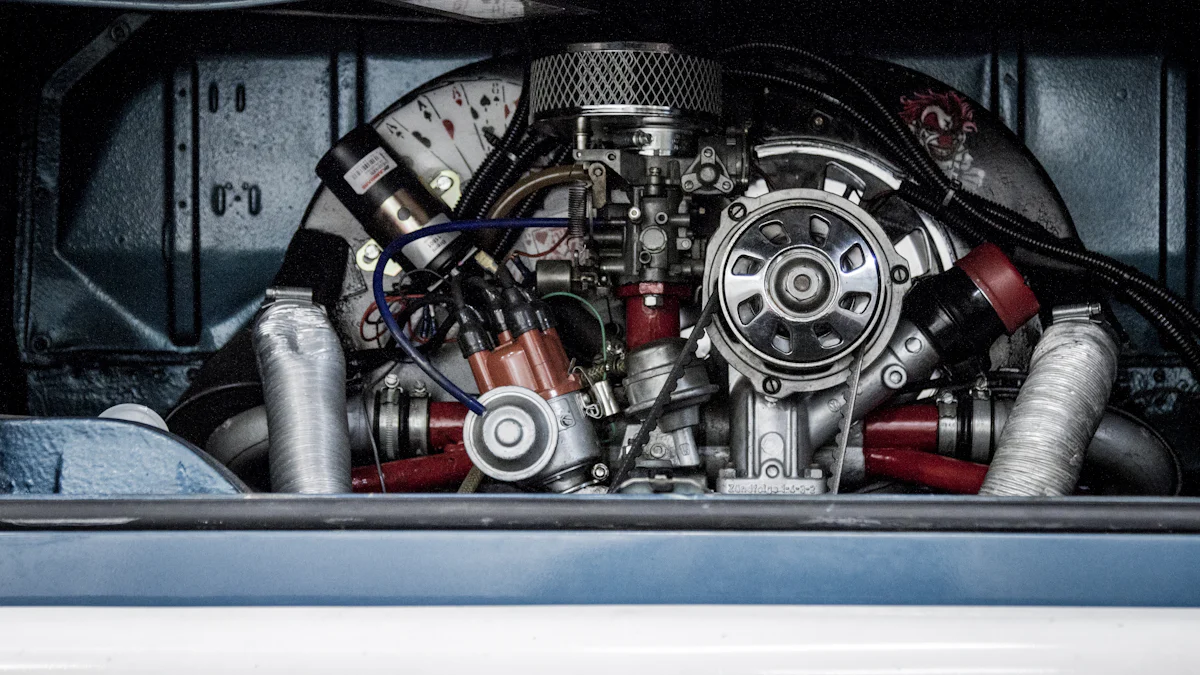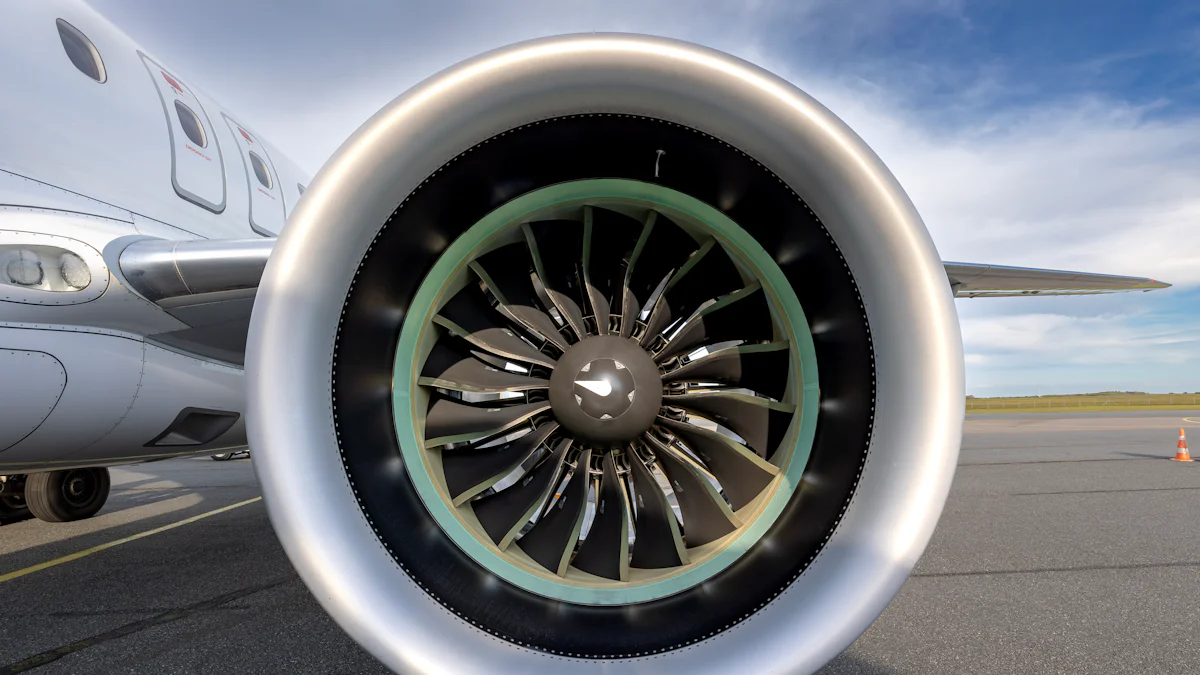
Engine vibration occurs due to combustion and mechanical forces. Higher vibration intensities can result from ethanol-run engines compared to gasoline-run engines. Reducing engine vibration is crucial for performance and longevity. A harmonic balancer serves as a key component in this process by absorbing and dampening vibrations, ensuring smoother engine operation.
Understanding Engine Vibration

Causes of Engine Vibration
Imbalance in the Engine
Imbalance in the engine causes significant vibration. Uneven distribution of mass around the crankshaft leads to this imbalance. This unevenness results in oscillations that transmit through the engine block.
Misfiring Cylinders
Misfiring cylinders contribute to engine vibration. When a cylinder fails to ignite the air-fuel mixture properly, it disrupts the engine’s smooth operation. This disruption generates irregular forces within the engine, causing vibrations.
Worn-out Engine Mounts
Worn-out engine mounts fail to absorb engine vibrations effectively. Engine mounts secure the engine to the vehicle’s frame. Over time, these mounts deteriorate and lose their ability to dampen vibrations, leading to increased engine movement and vibration.
Effects of Engine Vibration
Impact on Engine Performance
Engine vibration negatively impacts engine performance. Vibrations cause misalignment of engine components, reducing efficiency. This misalignment leads to suboptimal combustion and power loss.
Wear and Tear on Engine Components
Engine vibration accelerates wear and tear on engine components. Continuous vibration stresses parts like bearings, pistons, and crankshafts. This stress shortens the lifespan of these components, necessitating frequent repairs and replacements.
Driver Comfort and Safety
Engine vibration affects driver comfort and safety. Excessive vibration transmits to the vehicle’s cabin, causing discomfort for the driver and passengers. Prolonged exposure to such vibrations can lead to fatigue and reduced alertness, compromising safety.
What is a Harmonic Balancer?
Definition and Basic Function
A harmonic balancer is an essential component in an engine. It serves to reduce vibrations and ensure smooth operation. The harmonic balancer consists of multiple parts that work together to balance the engine and dampen vibrations.
Components of a Harmonic Balancer
A harmonic balancer typically includes an inertia mass and an energy-dissipating element. The inertia mass helps to counteract the forces generated by the engine’s operation. The energy-dissipating element, often made of rubber or fluid, absorbs and dampens vibrations.
How it Works
The harmonic balancer works by absorbing torsional vibrations from the crankshaft. These vibrations occur due to the combustion process and mechanical forces within the engine. By canceling out these harmonics, the harmonic balancer prevents damage to the crankshaft and other engine components.
Types of Harmonic Balancers
Different types of harmonic balancers exist, each with unique methods for controlling engine vibration.
Elastomeric Harmonic Balancers
Elastomeric harmonic balancers use rubber material to dampen vibrations. The rubber absorbs the energy generated by the engine’s operation, reducing the amplitude of torsional vibrations. This type is common in many standard vehicles.
Fluid Harmonic Balancers
Fluid harmonic balancers contain a viscous fluid that absorbs vibrations. The fluid’s movement within the balancer helps to dissipate energy, making these balancers highly effective in reducing harmonic vibrations. High-performance engines often use fluid harmonic balancers due to their superior damping capabilities.
Dual Mass Harmonic Balancers
Dual mass harmonic balancers feature two masses connected by a damping element. This design allows for better control of vibrations at various engine speeds. Dual mass balancers are suitable for engines that experience a wide range of operating conditions.
The Role of a Harmonic Balancer in Reducing Engine Vibration
Mechanism of Vibration Reduction
Absorbing and Dampening Vibrations
The harmonic balancer plays a crucial role in absorbing and dampening engine vibrations. The balancer consists of an inertia mass and an energy-dissipating element. These components work together to counteract the forces generated by the engine’s operation. The inertia mass helps to balance the rotational forces, while the energy-dissipating element, often made of rubber or fluid, absorbs the vibrations. This combination effectively reduces the amplitude of torsional vibrations, ensuring smoother engine performance.
Balancing the Crankshaft
Balancing the crankshaft is another vital function of the harmonic balancer. The crankshaft experiences torsional vibrations due to the combustion process and mechanical forces within the engine. These vibrations can lead to crankshaft fatigue and potential failure. The harmonic balancer minimizes these vibrations by providing a counteracting force. This balancing act prevents damage to the crankshaft and other engine components, enhancing overall engine reliability.
Benefits of Using a Harmonic Balancer
Enhanced Engine Performance
A harmonic balancer significantly enhances engine performance. By reducing vibrations, the balancer ensures that engine components remain properly aligned. Proper alignment leads to optimal combustion and power output. Engines equipped with a harmonic balancer experience smoother revs and improved efficiency. This enhancement is particularly beneficial for high-performance and racing engines, where precision and power are paramount.
Increased Engine Longevity
Using a harmonic balancer increases engine longevity. Continuous vibrations accelerate wear and tear on engine components such as bearings, pistons, and crankshafts. The harmonic balancer absorbs these vibrations, reducing the stress on these parts. This reduction in stress prolongs the lifespan of engine components, resulting in fewer repairs and replacements. Vehicle owners benefit from reduced maintenance costs and extended engine life.
Improved Driver Comfort
Driver comfort improves significantly with the use of a harmonic balancer. Excessive engine vibrations can transmit to the vehicle’s cabin, causing discomfort for the driver and passengers. The harmonic balancer dampens these vibrations, leading to a smoother and more comfortable ride. Reduced vibration levels also decrease driver fatigue and enhance overall driving safety. A well-functioning harmonic balancer contributes to a more pleasant driving experience.
Installation and Maintenance of Harmonic Balancers
Installation Process
Tools Required
Proper installation of a harmonic balancer requires specific tools. Essential tools include:
- Torque wrench
- Harmonic balancer puller
- Harmonic balancer installer tool
- Socket set
- Breaker bar
- Screwdrivers
- Lubricant
Step-by-Step Guide
- Preparation: Ensure the engine is cool. Disconnect the battery to prevent accidental starts.
- Remove the Old Balancer: Use the harmonic balancer puller to remove the old balancer from the crankshaft. Secure the puller to the balancer and turn the center bolt to extract the balancer.
- Inspect the Crankshaft: Check the crankshaft for any signs of wear or damage. Clean the crankshaft surface to ensure proper seating of the new balancer.
- Install the New Balancer: Apply lubricant to the crankshaft and the inner hub of the new balancer. Use the harmonic balancer installer tool to press the new balancer onto the crankshaft. Ensure the balancer seats fully and aligns correctly.
- Torque the Bolt: Use a torque wrench to tighten the balancer bolt to the manufacturer’s specified torque setting.
- Reconnect the Battery: Reconnect the battery and start the engine. Check for proper operation and absence of unusual vibrations.
Maintenance Tips
Regular Inspection
Regular inspection of the harmonic balancer ensures optimal performance. Inspect the balancer during routine maintenance checks. Look for signs of wear, cracks, or separation of the energy-dissipating element. Ensure the balancer remains securely attached to the crankshaft.
Signs of Wear and Replacement
Recognize signs indicating the need for replacement. Common signs include:
- Visible cracks or damage to the balancer
- Unusual engine vibrations
- Misalignment of the balancer
- Noise from the front of the engine
Replace the harmonic balancer if any of these signs appear. Timely replacement prevents further damage to the engine and maintains smooth operation.
Reducing engine vibration is crucial for maintaining optimal engine performance and longevity. A harmonic balancer plays a vital role in this process by absorbing and dampening vibrations, ensuring smoother engine operation.
Benefits of a Harmonic Balancer:
- Enhances engine performance by maintaining proper alignment of components.
- Increases engine longevity by reducing wear and tear on parts.
- Improves driver comfort by minimizing vibrations transmitted to the cabin.
Regular maintenance of the harmonic balancer ensures continued effectiveness. Inspect for signs of wear and replace as necessary to maintain optimal engine performance.
Post time: Jul-27-2024



